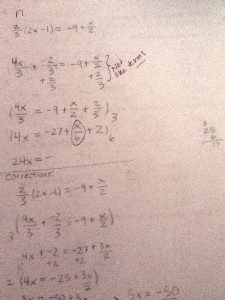While doing measurement homework, I discovered that I needed to use scientific notation. However, I never learnt it before so I had to teach myself. Being the lazy individual I am, I didn’t bother reading the notes and dove right into some practice questions, such as:
2. Express each number in scientific notation.
a) 2 300 b) 7 580 000 c) 41 000 000 000
All I knew was that I had to write it into (x and y represent integers). After struggling and repeatedly getting the answers wrong, I started to notice a pattern. I found that if I counted the numbers after the first one, the number I received became the exponent. Also, the numbers that aren’t 0 would be turned into a decimal less than 10 and more than 0. For example:
2 300
There are 3 numbers after the 2, so the exponent is 3. 23 becomes 2.3. Written in scientific notation:
I tried this strategy for the rest of the questions and it worked! Until I ran into these sneaky questions:
0.000 023
Here, I figured out that I can count the number of digits after the decimal point, then subtract the number of digits that aren’t 0s. However, I need to leave out one digit when subtracting. Example:
000 023 = 6 digits
There are 2 digits that aren’t 0, but I need to leave one out, so:
,so
Through trial and error I also discovered that the exponent becomes negative when dealing with these tiny numbers. I was delighted to find out that my made-up strategy was similar to the one my math teacher taught, when we went over our homework.













